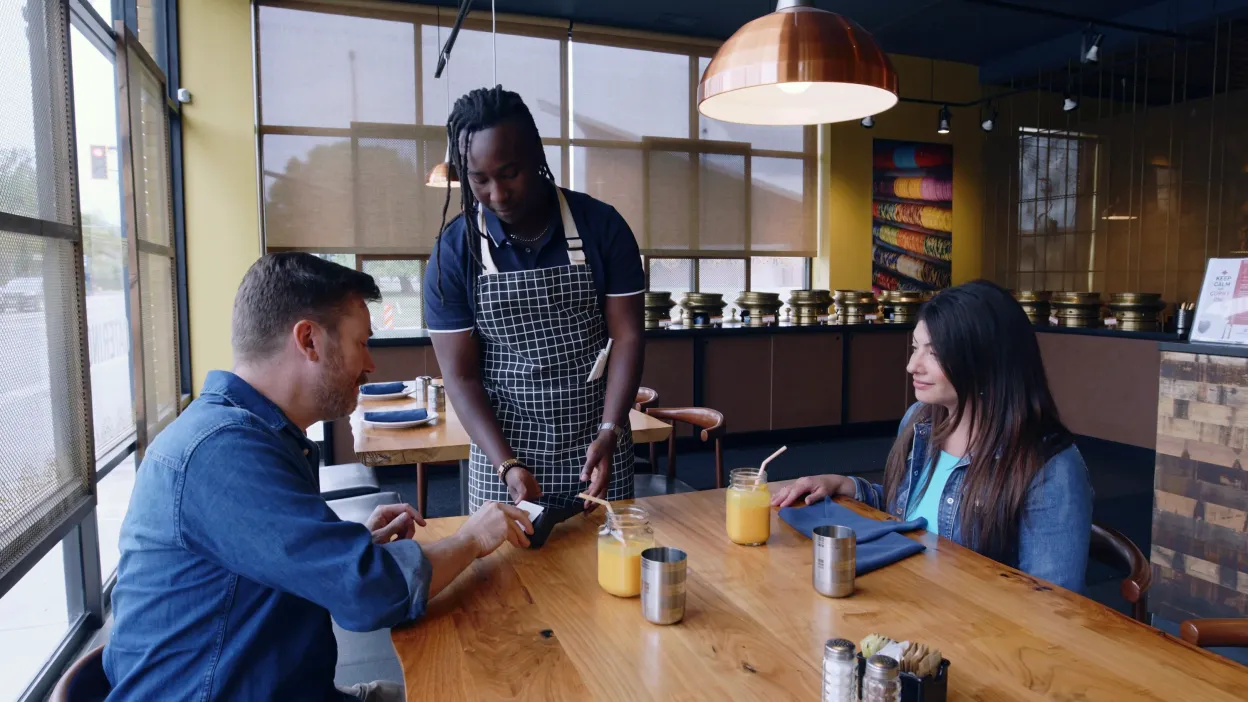How COVID-19 Changed Restaurant Payments Long-Term
Listen to this article

Looking back, COVID-19 was the turning point for restaurant operations and, therefore, restaurant payments. Creative restaurant owners did everything they could to try to keep their businesses open to stay viable during the pandemic, and when it subsided, restaurants found that their businesses now operate in a much different way than they did in 2019.
What Changed During the Lockdowns
Trends that began before the pandemic gained momentum as consumers looked for ways to distanced and touch-free ways to engage. Online ordering and payment became a necessary staple during this time, and curbside pickup went from a time saver to a standard operating procedure as 67% of restaurants adopted the process.
Additionally, third-party delivery services, like Grubhub, DoorDash, and Uber Eats, became popular services for quarantined customers, and some restaurants offered delivery directly, saving third-party fees.
The ghost kitchen concept also became more popular. Restaurants that chose this model have only kitchen facilities, not dining rooms, and only sell food for delivery or pickup. In addition, smaller spaces and lower overhead made making ends meet easier as prices rose.
Another trend that accelerated since 2020 is self-service ordering and payments. Self-service, including ordering at a kiosk in a QSR or on a tablet at a table in a casual dining restaurant, enabled social distancing and a way for restaurants struggling to fill vacant positions to reallocate counter staff to other tasks. Pay-at-the-table processes evolved as well, with more of a focus on contactless and touchless methods.
Why Restaurant Payments Will Be Different Moving Forward
While those measures filled gaps and kept restaurants in business, they also introduced more consumers to interacting digitally. Consumers, now accustomed to its ease of use and convenience, continue to use these options. For instance, curbside pickup grew by 37% in 2021.
Self-service has also become a mainstay in the restaurant industry for the foreseeable future. Not only do they fill gaps created by the labor shortage, but the majority of consumers, 65 percent, prefer them over relying on restaurant staff. In addition, customers tend to order 12 to 22% more when ordering at a kiosk, helping to boost revenues.
Pay-at-the-table processes are now contactless, with mobile devices accepting contactless card and mobile wallet payments. In fact, 40% of consumers now prefer to pay for their tabs at bars and restaurants with mobile wallet apps. Additionally, some restaurants are printing QR codes on receipts to allow guests to pay with their smartphones.
Restaurant Payment Technology Makes It All Possible
The new ways consumers are engaging with restaurants are changing how they pay. To meet customer demands, restaurants must upgrade to new technology so that they can accept online, mobile, self-service/unattended payments and alternative methods such as QR codes.
Although the pandemic was a trying time for the restaurant industry—and many businesses weren’t able to adapt and thrive—the changes that resulted from it are generally for the better. Restaurants can now reach wider audiences, capture sales on new channels, increase revenues, and deliver the experiences that today’s consumers prefer. However, it depends on whether they have a payments solution that allows them to accept payments wherever customers engage and in-store payments technology with the flexibility to accept the full range of payment methods.
But remember, consumer behaviors will continue to evolve and change, technology will advance, and the industry will face challenges again. Restaurants need payment solutions that help them adapt today and have the agility to respond to changes in the future.
To learn more about payment technology that gives restaurants the features and flexibility they need, contact Ingenico.










